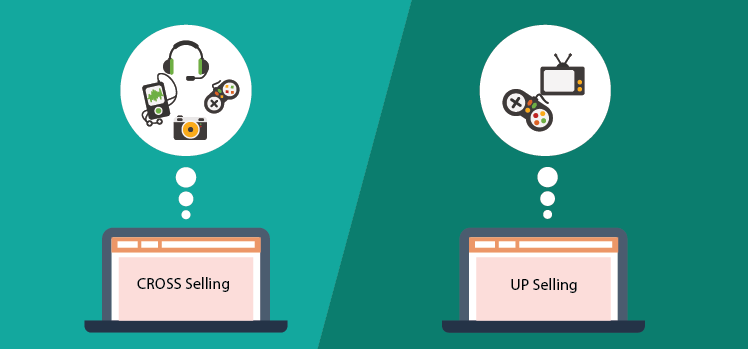How CRM Can Help In Cross-Sell and Upsell
Sales agents understand the power cross-sell and upsell hold in a business. Earning a new customer is a time-taking process, but worth it in terms of expanding your sales base. On the other hand, selling to an existing customer is easier—you already understand their buying patterns and behaviors. According to Invespcro, the probability of getting a sale from a new customer is 5 to 20 percent. The probability of getting a sale from an existing customer is 60 to 70 percent.
Cross-sell and upsell is a win-win situation for any business.
You can ensure you meet the customer’s needs and it helps increase your revenue stream. A strong strategy, however, is key.
The best way to take advantage of this selling opportunity is with an all-encompassing view of your existing customer database. Your CRM should allow you to gain insight into your customer’s purchasing mindset.
1. Use 360-Degree Contact View to Gain Insight
Having a complete view about your customer’s buying behaviors and patterns means you can understand their needs. Cross-selling and upselling is all about leveraging that information. Identify if the product/service being used requires cross-sell or upsell and offer something similar.
Agile CRM offers a 360-degree view of your contact’s communication activity. Using this information, any software company can identify if a customer’s warranty is expiring and cross-sell accordingly.
2. Use Feedback to Pitch More Features and Upgrades
Every business has a feedback column, form or tool where customers can input their opinions and ideas. A CRM makes it easier for you to look at and filter that feedback. Analyze the data and look for opportunities where you can cross-sell or upsell by pitching related features/upgrades.
Agile CRM offers a centralized communication platform where you can filter and analyze customer feedback. It’s easy to see if a customer is looking for an extra upgrade or feature. Service upgrades can provide more free emails and features that help in tracking email open rates.
3. Track Web Habits to See What Your Buyer Wants
A great way to identify sales opportunities is to see what your buyer is doing online. Using a CRM, you can analyze what web pages your customers are checking, what type of content they are reading and what offers/content upgrades they are downloading.
Agile CRM allows easy web tracking, which helps you analyze your customer’s online activity and push for extra sales. Say a customer is using your standard plan, but his web activities show that he’s interested in extra features. Now is the time to make him an offer.
4. Track Renewal Periods to Pitch New Features and Upgrades
Free trial users, one-year plans and the like have a deadline that can turn into a lost sales opportunity if you aren’t alerted at the right time. With a CRM, you can set up alerts for such users. Once you get a notification that a user’s free trial is up, you can send an email not only with a renewal reminder, but also an upgrade/feature inclusion.
Agile CRM does all of this. It allows you to set alerts for various contacts or contact activities. If any of your customer’s products or services are ready for renewal, you can send a renewal email and pitch new upgrades or features at a minimum price plan.
Make sure your sales agents are not ignorant of this selling technique. If possible, train them to identify, pitch and retain customers this way. Similarly, make optimum use of your CRM to understand your customer’s journey. Jump on the sales opportunities whenever possible.
Keep in constant contact with your service reps as they are the ones handling customers on regular basis. If you have your service automation integrated with a CRM, like Agile, then this communication process can be filtered easily and you won’t miss the chance to cross-sell and upsell.

1 Comment